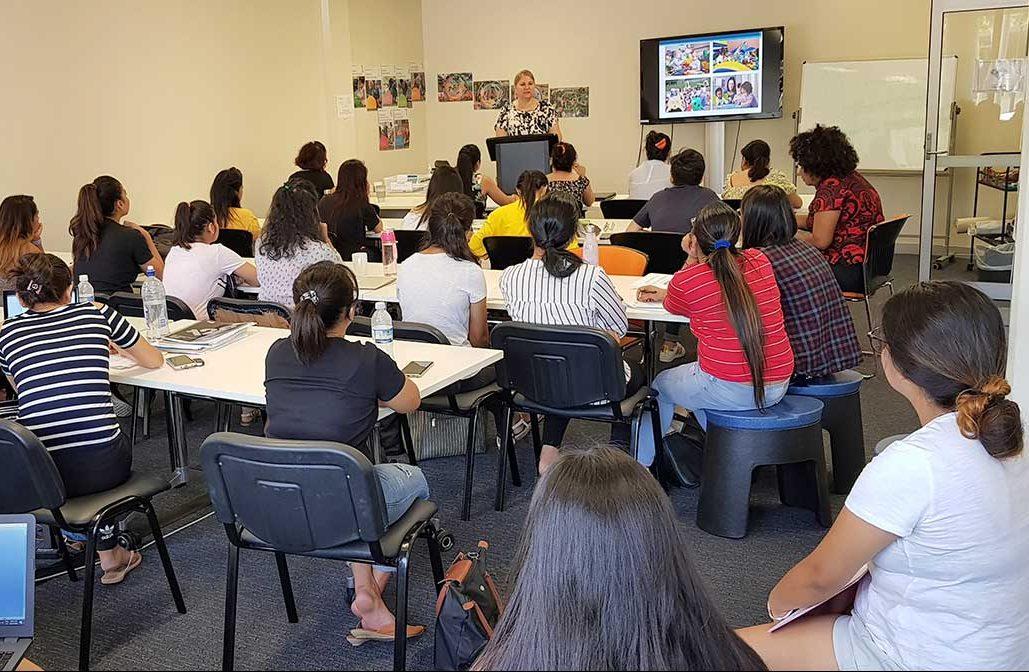Building an education and training link between northern Australia and eastern Indonesia
Posted By Hillary Mansour on March 24, 2021 @ 06:00

In 2018, the Australia–Indonesia Comprehensive Strategic Partnership recognised a ‘proximity advantage’ between eastern Indonesia and northern Australia offering ripe opportunities for development, growth and cooperation. Yet, despite the Australian government’s reported enthusiasm over decades to increase our involvement with Indonesia’s traditionally poorer and less developed eastern region, our partnerships and aid investments [1] have demonstrated broad rather than targeted commitments. Translating high-level policy and diplomatic commitments into action has been difficult.
The education sector is one area in which this geographical advantage can and should be used much more effectively. Australia is Indonesia’s top tertiary education destination [2], receiving 24.4% of Indonesia’s 49,900 mobile students in 2019.
Australian higher education is more than an export industry. It can serve a bilateral trust-building function, strengthening people-to-people links and creating ‘bridges of cooperation’ [3] between our communities. Unfortunately, the Australian education system (from primary school to university) has drastically reduced its Indonesian language [4] and cultural content at a time when our collective Asia literacy is vital.
The flow of Indonesia’s elite tertiary students is the most critical—if not the only—soft power card in Australia’s hand when it comes to the bilateral relationship. The tendency for these students to study at Australia’s top universities should not distract from other opportunities in higher education and vocational training.
Darwin has enormous potential as a hub of higher education and vocational training. It already delivers top-tier research through Charles Darwin University and, though it lacks the repute of Sydney or Melbourne, its lower living costs, strong multiculturalism and accessible location at the edge of the Indonesian archipelago could make the city an attractive destination for more Indonesian students—if we promote it.
Darwin is strategically positioned as a centre for collaborative bilateral problem-solving. Its distance from other Australian cities, its innovative and pragmatic developmental ethos, and its experience with natural disasters make Darwin and the surrounding region a natural and empathetic counterpart to eastern Indonesia. It’s no coincidence that Darwin’s sister city is Indonesia’s Ambon. And as the only northern Australian city with its own Indonesian consulate, Darwin is firmly positioned on Indonesia’s strategic radar. This was demonstrated [5] by Indonesia’s strong reaction when Darwin first hosted US troops in 2011.
As two relatively underdeveloped regions that have historically received inadequate policy attention from their central governments, northern Australia and eastern Indonesia share common challenges in infrastructure, sustainability and workforce shortages in key industries.
In the long term, turning Darwin into a committed centre for multi-institutional and multidisciplinary education, with collaborative programs and, potentially, sister institutions in eastern Indonesia, could produce the next generation of capable industry workers and facilitate joint research to address these common strategic issues. It’s a case of two birds, one stone.
For Australia, there are also manifold short-term and long-term benefits. Stronger institutional ties with Indonesian universities would give Australian students opportunities to engage with and understand our strategically critical neighbour, and to build friendships, research links and business connections. It might encourage more Australians to take up Indonesian studies and tertiary institutions to reconsider cuts [6] to their Indonesian language programs.
For Australia’s struggling research community [7], which is facing rising unemployment across disciplines, research positions in Darwin would be a chance to jump at. Larger student populations might also lead to stronger communities to fill jobs both within and outside of Darwin’s traditionally defence-focused industries.
These aspirations are ambitious but not unrealistic. It would take policy incentives and funding to encourage more universities and vocational institutions to establish campuses in Darwin, but future research links could draw on strong existing networks [8] between Indonesian and Australian institutions. The Australia–Indonesia Centre is a good example. Funded by the governments of both countries, the centre researches and evaluates bilateral collaborative potential across industries, including agribusiness, education, retail and hospitality. Its Partnership for Australia–Indonesia Research, or PAIR, is already on the ground in South Sulawesi, researching aspirations of young people [9] in the rural east of the archipelago. The findings from this research could direct and improve efforts to engage with this community.
The time to act is now. President Joko Widodo’s commitment to enhancing inter- and intra-island transport links have seen an ‘infrastructure bonanza [10]’, including a new port in Makassar. This growth will result in an increased demand for skilled and semi-skilled labour and provide a window of opportunity to establish program linkages in a way that benefits both nations. Directing policy towards the region would complement Widodo’s aspirations to build up the eastern provinces and help show Australia’s commitment to Indonesia.
Indonesia has made no secret of its demand for Australia’s world-class research institutions. Last year, Monash University was approved as Indonesia’s first foreign university [11], a ‘glittering showpiece’ [12] of our bilateral relationship. While this and other top universities in Melbourne and Sydney will always attract their share of privileged students, Darwin could offer a different experience to a wider audience, with unique and specialised practical programs that address challenges shared by Australia’s north and the nation to our northwest.
Article printed from The Strategist: https://aspistrategist.ru
URL to article: /building-an-education-and-training-link-between-northern-australia-and-eastern-indonesia/
URLs in this post:
[1] partnerships and aid investments: https://www.dfat.gov.au/geo/indonesia/development-assistance/stability-in-indonesia
[2] top tertiary education destination: https://www.austrade.gov.au/ArticleDocuments/10452/MIP_Market_Focus_Indonesia_Summary.pdf.aspx
[3] ‘bridges of cooperation’: https://www.dfat.gov.au/geo/indonesia/Pages/joint-declaration-comprehensive-strategic-partnership-between-the-commonwealth-of-australia-and-republic-of-indonesia
[4] reduced its Indonesian language: https://theconversation.com/axing-protection-for-national-strategic-languages-is-no-way-to-build-ties-with-asia-154555
[5] demonstrated: https://www.smh.com.au/national/indonesia-wants-answers-on-us-military-plans-20111111-1nbxg.html
[6] cuts: https://www.smh.com.au/national/dumb-and-dumber-language-cuts-risk-australia-s-regional-relationships-20201214-p56n7h.html
[7] struggling research community: https://www.theguardian.com/australia-news/2020/jun/20/its-awful-for-our-intellectual-life-universities-covid-19-and-the-loss-of-expertise
[8] existing networks: https://australiaindonesiacentre.org/
[9] young people: https://pair.australiaindonesiacentre.org/news/understanding-the-aspirations-of-young-people-in-rural-communities-in-south-sulawesi/
[10] infrastructure bonanza: https://pair.australiaindonesiacentre.org/wp-content/uploads/2020/05/PAIR-overview_SulSel-economy-2.pdf
[11] Indonesia’s first foreign university: https://www.reuters.com/article/us-australia-indonesia-education-idUSKBN2040TV
[12] ‘glittering showpiece’: https://www.afr.com/policy/foreign-affairs/what-pandemic-long-term-bets-made-on-australia-indonesia-fta-20200706-p559bu
Click here to print.